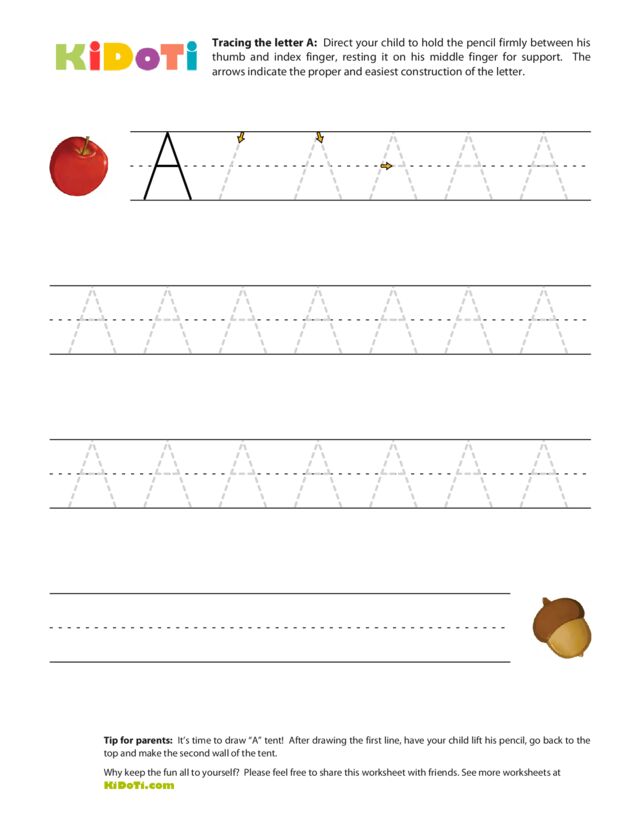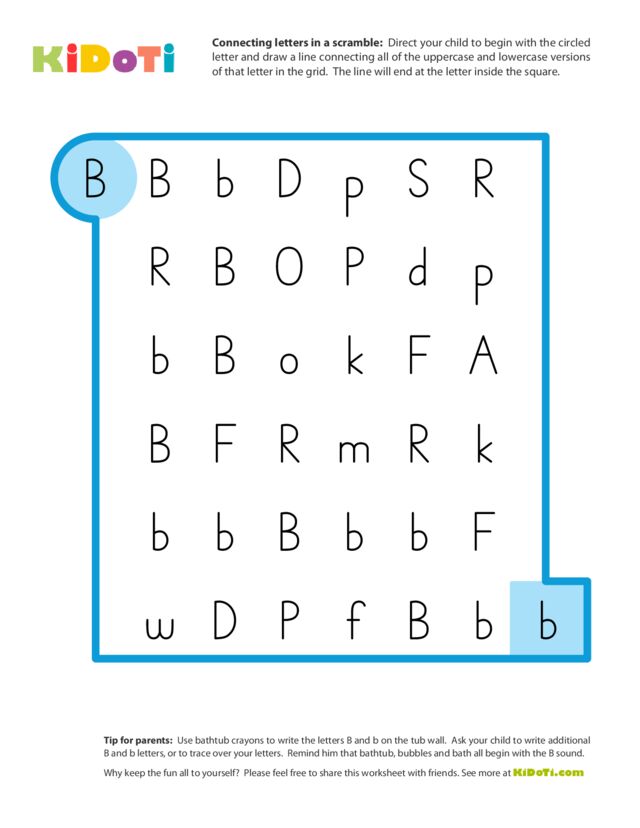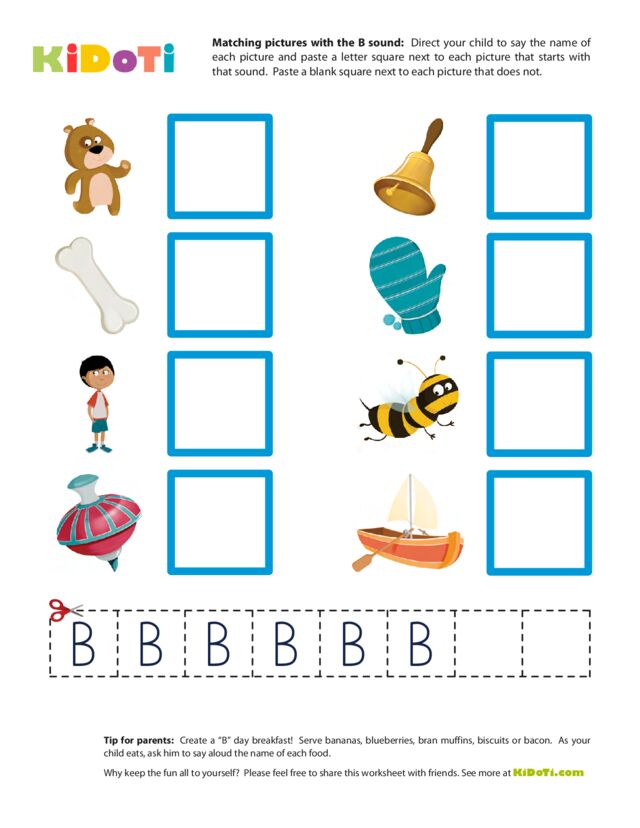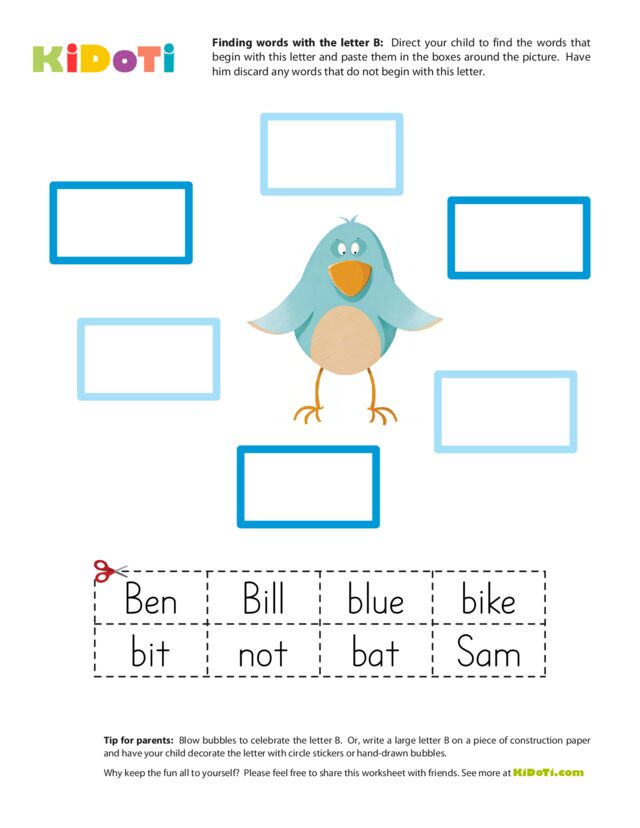When first introducing your child to the letters, we recommend introducing them in a specific order: B, M, F, D, S, P, V, T, L, Z, N, W, J, K, H, C, G, Y, R, A, O, I, U, E, Q, and X. This order highlights letters that are simpler to write and that have more basic sounds first and saves the more complicated letters for the end. All letters will be added to this collection of letter worksheets in that specific order.
The Alphabet Basics includes worksheets to help your child learn to identify what sound(s) each letter makes and identify each letter in a printed word plus letter tracing worksheets to help your child learn to write each letter.
Tracing Letters
Connecting Letters in a Scramble
Matching Pictures with Same Sound
Finding Words with Same Letter
Identifying Letters
Tips for helping children learn the alphabet
All children learn to recite the alphabet when they are young. But being able to identify each alphabet letter and understand what sound each letter makes and how to write each letter are advanced skills that are typically not mastered until children begin preschool or kindergarten.
The simplest way to help your child quickly learn the alphabet is to follow two basic guidelines:
Don’t just start with A. Although A is the first letter in the alphabet, there is no rule that says the letter A is the first letter you need to teach your child. By following the order I outline above, you will be sure to start with the letters that are easiest to learn and end with the most challenging letters.
Let your child set the pace. As with most things, all children are different and what may come easily to one child may be challenging to another child. When it comes to learning the alphabet, some children may be able to learn two or three letters a day and other children may learn one letter a week. Both situations are fine, as the end result is that both sets of children have learned all the letters in the alphabet and are comfortable identifying each letter’s sound and what it looks like in a word. The key is to go at your child’s natural pace so that learning the alphabet is a fun and exciting activity for him.
Tips for using alphabet worksheets
Alphabet worksheets (also called letter worksheets by some teachers and parents) are a wonderful way to introduce children to the 26 letters. With their colorful pictures and easy-to-complete activities, alphabet worksheets can be completed in short bursts of time which makes them an ideal match for a child’s relatively short attention span.
As outlined above, there are 6 different worksheets for each letter:
- Coloring the letter
- Letter scramble
- Finding the letter in a word
- Matching the letter to the sound it makes
- Uppercase letter tracing
- Lowercase letter tracing
We suggest introducing the alphabet worksheets to your child in that order, beginning with the coloring letter worksheet and ending with the lowercase letter tracing worksheet. Once your child is comfortable identifying each letter printed individually and within words, he will be poised to match each letter with the correct sound and learn how to properly write each letter.




